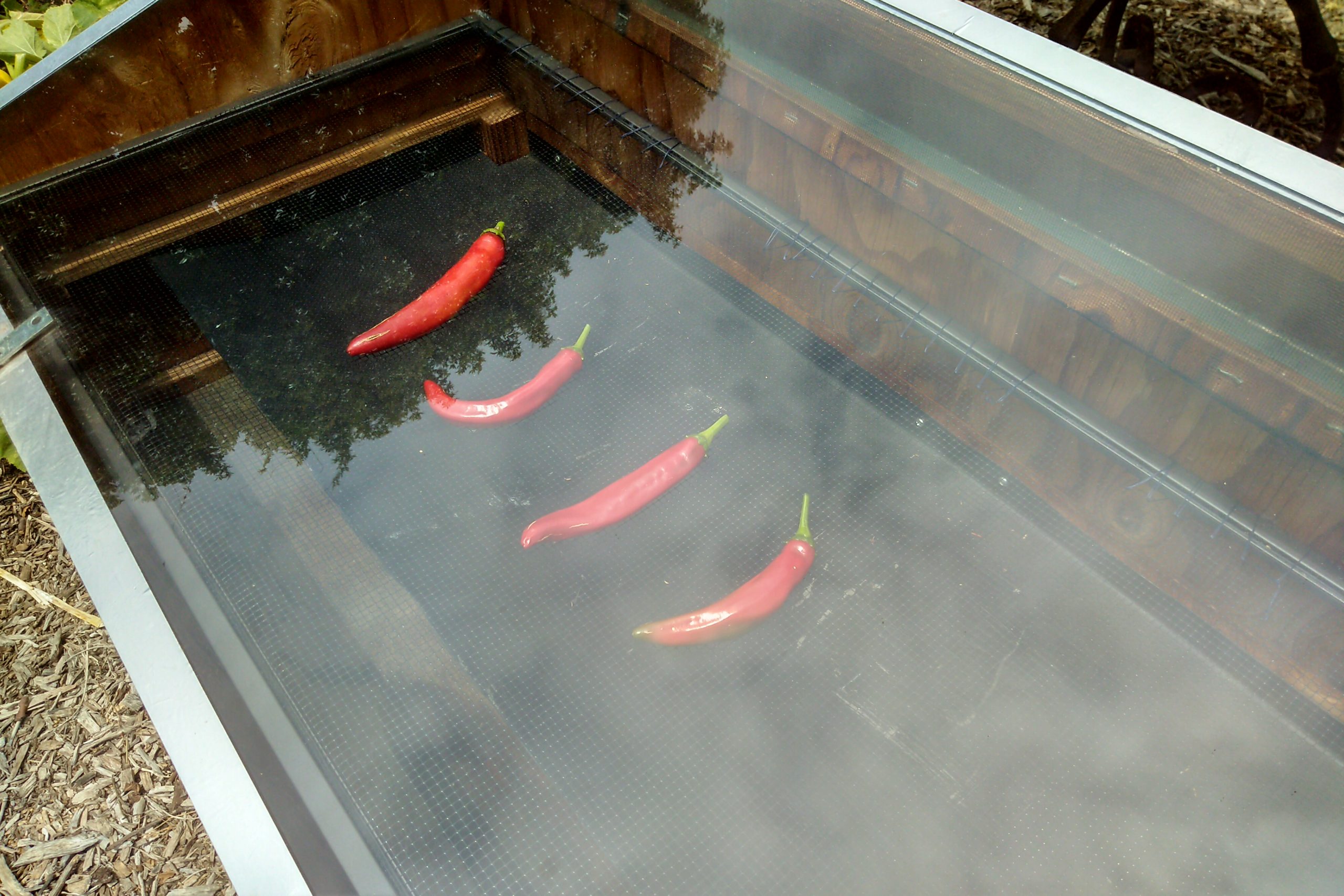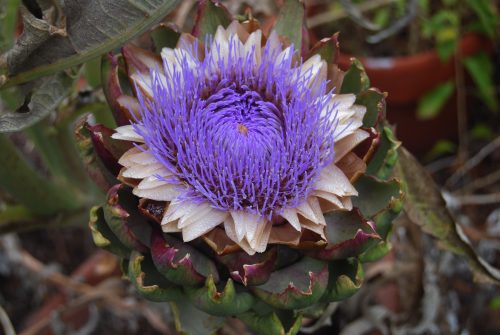As summer starts to wane it’s time to preserve the harvest, and drying peppers is part of the process. Our guajillo chili peppers (really marisol when fresh, guajillo when dried) are turning red so we’ve pulled out our solar food dryer to make some magic.
Guajillo peppers are one of the three chilis used in making mole sauce, but is also used to make harissa, and can be substituted for ancho powder in recipes. Side note: it’s also a landrace variety – cool! We’re going to dry them for use in spicy dishes through winter. We’ll freeze some while fresh in the green stage, just for giggles.
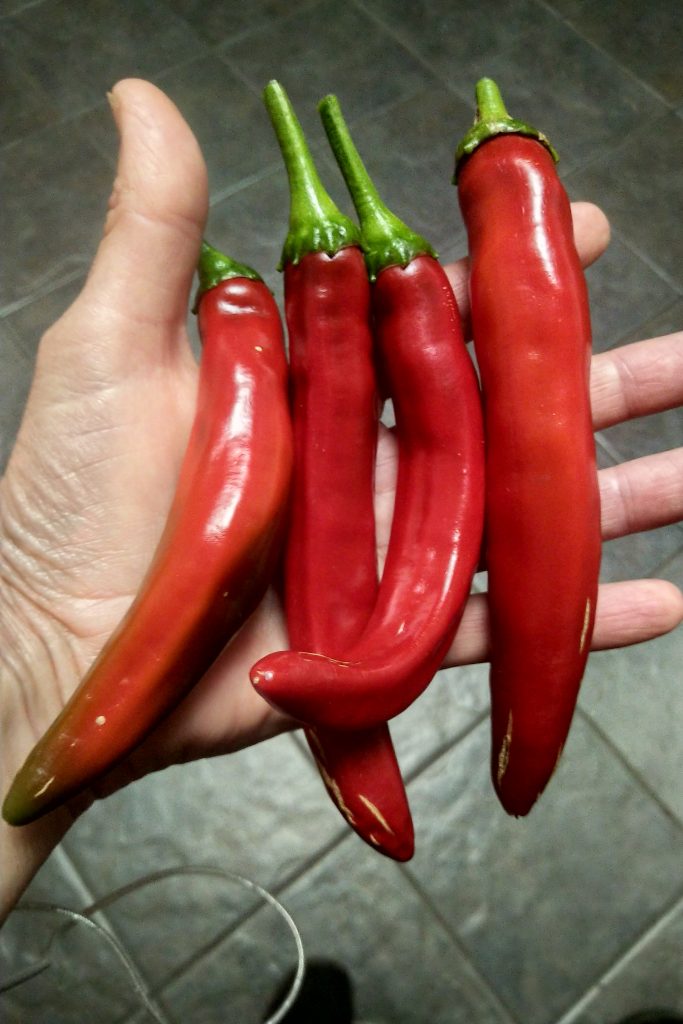
Whether you have an indoor electric food dehydrator or an outdoor solar method, the process is the same. Timing is the only difference. Our solar dryer uses convection so it dries more quickly than indoor electric models. That said, a cloudy day can slow down the process.
Step 1: wash and thoroughly dry your peppers.
Step 2: arrange them on a screen for drying.
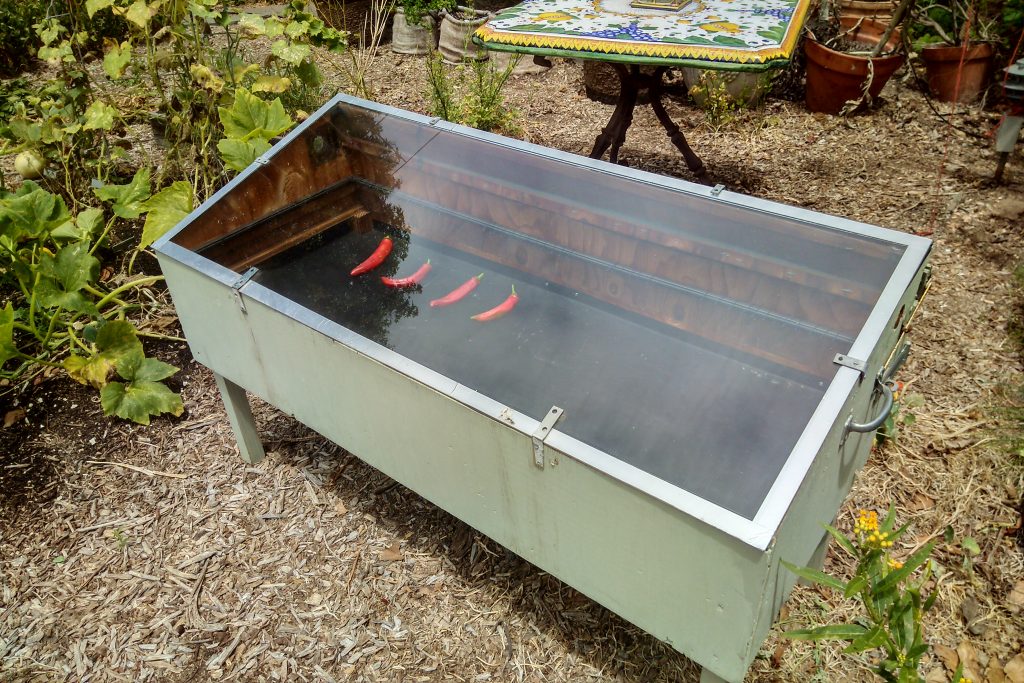
Step 3: Wait.
Peppers can take anywhere from 8 hours to a couple days to dry depending on your method. Test them every once in a while to see if they are done. How do you know they are completely dried?
They should be light as a feather and rattle on the inside when done. They should also not spring back to the touch at all, but rather crack or shatter if pushed too hard.
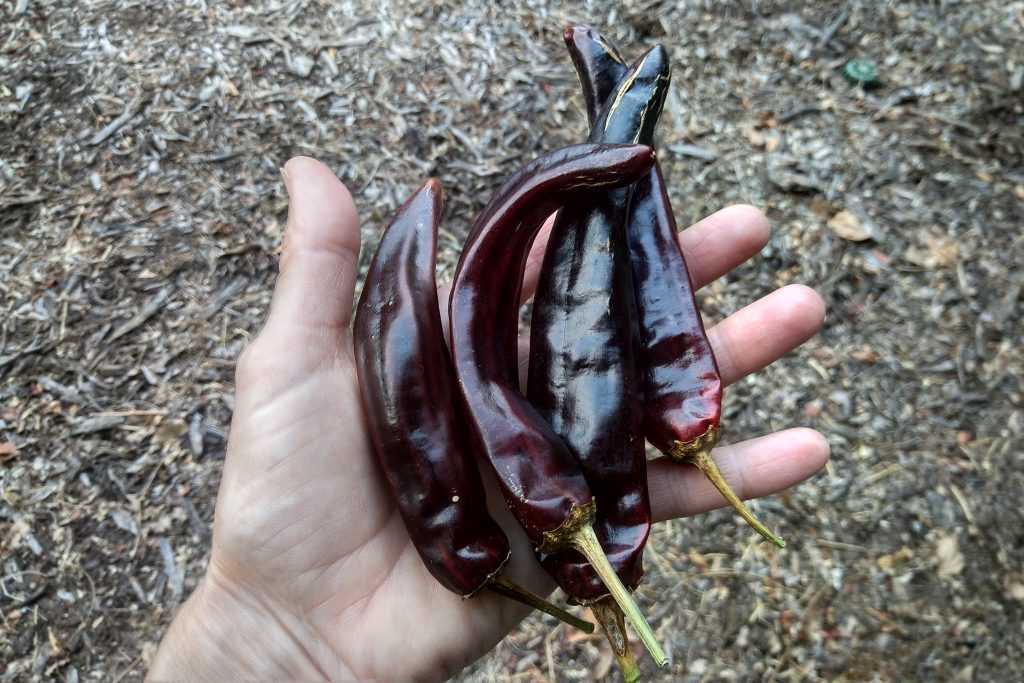
Store your dried peppers in a plastic bag or glass jar for later use. You can use this technique for any pepper, either whole of sliced. Sliced peppers will dry more quickly than whole, but you’ll lose the seeds in the process. You can dry those separately on the counter and add them back in to the mix to grind into powder afterward.
You can find instructions to build your own solar food dryer in Gardening for Geeks.
See other posts about dehydrating your summer harvest:
Make your own chili powder here.
Make fruit leather – we just did!
Keep your summer harvest going through winter with dehydrating and other techniques. Stay tuned for more ways to store your harvest.

